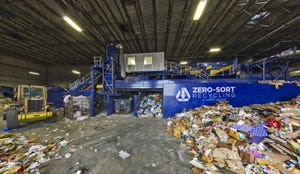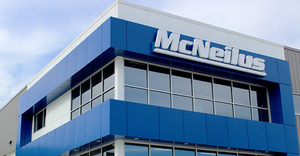Does Gasification Have Unrealized Potential for the MSW Space?
A handful of municipal governments and waste authorities are looking into launching plants.
Gasification as a waste conversion technology is riddled with challenges. Glitches have made scaling up the technology difficult. Funding is hard to come as the few projects that have gone commercial have taken years to open and often run over budget. Regulatory environments and tough market conditions present additional roadblocks to its adoption.
In the municipal solid waste (MSW) arena, gasification projects are especially tough deals, as managing this heterogenous stream is complex. But gasification has unrealized promise for the space, proponents argue. The process, leveraging low oxygen and low heat rather than combustion, produces fewer emissions than incineration. And it can be done on a smaller scale, offering options for less-dense regions to turn their trash to electricity or fuel.
A handful of municipal governments and waste authorities are looking into launching plants or have begun the process, for example, in the Florida Keys. There are a few commercial operations in Canada. And Covanta has made gasification work, tweaking its existing technology to design a unique two-step process.
One of the most critical challenges is pace and size of scale up, says Bruce Clark, project director at SCS Engineers in Sacramento, Calif.
“There have been structural issues, thermal issues like vessels cracking probably due to expansion, among others” Clark says. “But smaller modules that can be built quickly and delivered somewhat reassembled are making a difference in getting these plants up to speed.”
Small modules can be linked and the system can be scaled up later. This allow waste companies and municipalities to try the technology without devoting their whole stream to a potentially risky venture.
There is one particular sweet spot in the MSW niche that gasification could potentially address—one that incineration can’t. Because it can handle smaller trash volumes, it could offer waste-to-energy (WTE) options to municipalities without critical mass.
“A lot of underserved, small cities are left with landfilling. I believe it’s possible to serve that niche through gasification,” says Michael Fatigati, president of Vantaggio Renewable Energy based in San Juan Capistrano, Calif. “You could produce a high-value product from MSW … to make liquid fuels while minimizing landfill space needed.”
His company is currently involved in a demonstration project at the University of California, Riverside providing guidance to the developer, Taylor Energy of El Dorado Hills, Calif.
After almost two years of design and construction, the unit, rated at eight tons per day, is undergoing trials to provide data for scale-up.
Low-energy production presents a challenge.
Partial oxidation yields less energy than full combustion. Plus, MSW has a lot of byproducts requiring substantial gas clean up. Balancing the cost of using this feedstock with revenue from the resulting relatively minimal energy is hard.
Covanta is attempting to strike that balance. It has a two-stage process: stage one is partial oxidation of its waste to make syngas; stage two is full combustion.
The corporation calls their process evolutionary rather than revolutionary as it offers incremental benefits over conventional combustion, mainly less emissions. And by combining the two processes it becomes slightly more energy and cost efficient.
“Using alternative technologies such as pyrolysis to make a high-value end product is a complex and expensive process,” says Steve Weber, Covanta’s vice president of business development. “People are working to make it commercially viable, and we hope they are successful. But we’ve done pilots and do not presently see the economics to make it worth the investment.”
Enerkem has had staying power in Canada, but even this world leader in conversion technologies recently hit a legal brick wall over an ethanol project, slated to launch by 2012, that’s still having trouble.
Though Enerkem told Waste360 a new unit converting methanol into ethanol is being added. The plan is to sell ethanol produced at the plant in 2017.
Where landfill space is tight, tip fees and energy are expensive, and disposal is far from where waste is generated, some entities are trying to do these projects.
To make it work, they need technology, land, a permit, a waste contract for the project’s duration, an offtake agreement for all products to be produced for 20 years, and financing. If any one of these is missing, the house of cards falls, says Steven Viny, CEO of Envision Holdings in Cleveland, Ohio.
His advice for anyone motivated to try and make a go of it? “I would say, bring fully demonstrated technology and supporting test data,” Viny says. “Bring a realistic proforma that makes good business sense, lots of money, time, and patience. That said, there are a few examples of successful projects or at least projects that are built and in some stage of operation.”
About the Author
You May Also Like




